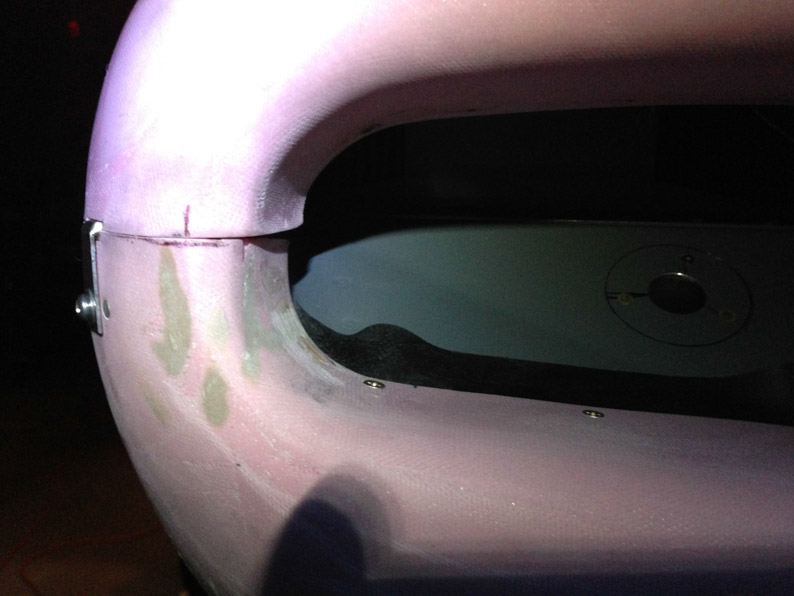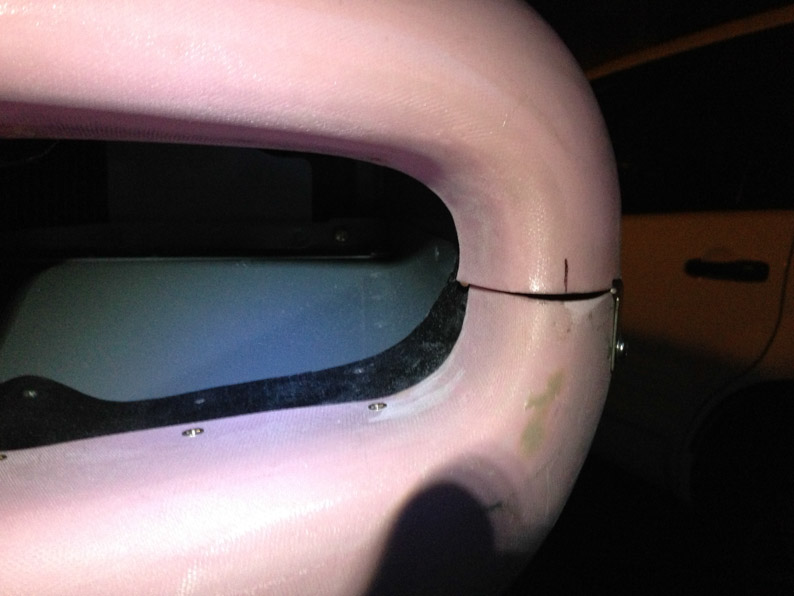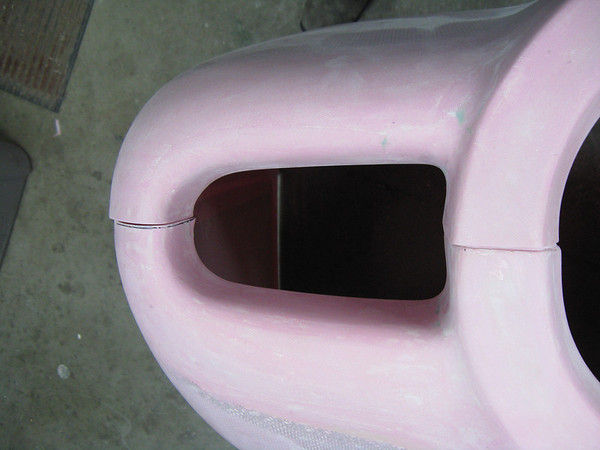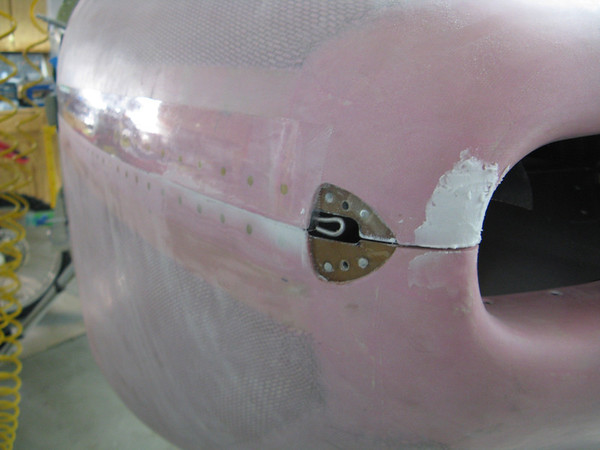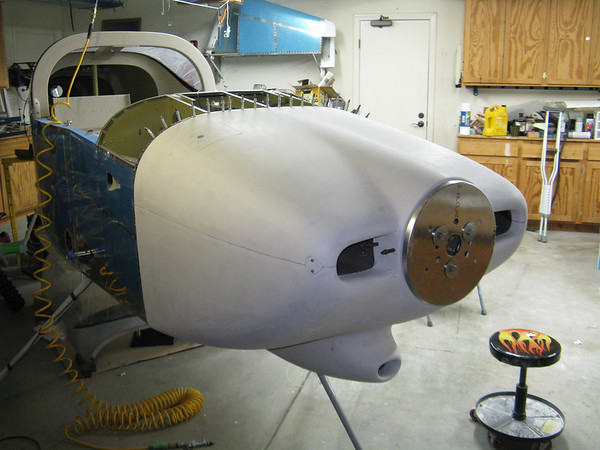Proper engine cooling starts right here, at the inlets. The inlets, top compared to bottom, side compared to side, are supposed to be parallel or slightly diverging, up to 3 degrees I believe. From the pictures, if you measure the distance from the end of the radius in the opening, top to bottom, and then take the same measurement in about 2 or 3 inches I believe you will find that the actual inlet size gets smaller, thus a converging duct. This is not an ideal situation and you have the opportunity to correct this when you are correcting the miss match of top and bottom cowling halves.
Think like the air, try to get it to flow straight where ever possible. The picture shows that the glass in these miss-matched areas actually pinches the incoming air, causing it to change direction inboard.
To fix this I would cut a series of slits, 1/4" apart in the glass, top and bottom all the way around the outboard inlet. These little cut flaps can now be pushed back in the correct position and glassed in place. At the same time raise the top of ramp of the upper cowling so that it is parallel, or slightly divergent, with the bottom cowl ramp. To do this you will also have to slight the inboard upper radius of the top cowling.
Although this may seem like a lot of bother it will get your system set up correctly, at the start, and also clean up the current alignment issue.
To do this I use a three step process. Slit and rough glass the parts, from the outside, into the right position.
When dry sand/grind the inside areas , which will grind off some of the original slitted bits, and glass this area.
When that dries, grind off the original outside layup and most of the original slitted material and lay up a nice smooth final glass area.
Doing it this way will remove any tendency for the original parts to move back to where they started.
For bonus points, when you get this done wax up the inner cowling outer lip.
Then sand/rough up the lower cowling outer lip.
Put the halves together with the waxed hinges and pins and pour an insert of glass/ flox into the lower/upper lip area.
This will give you a perfect seam between the cowling pieces in this area.
It will stop air leaks, look better and also help to hold this important shape over time.
It amounts to about an hour at day for four days, not much to make a nice part.
